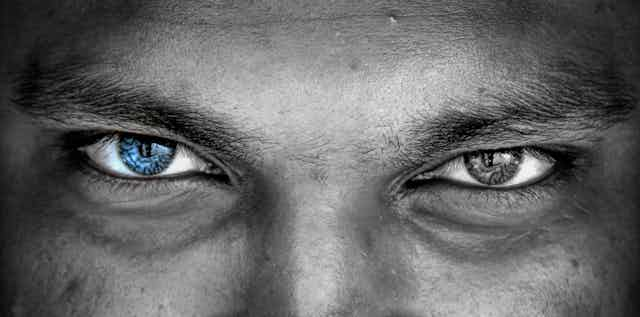The launch of the Samsung Galaxy S4 last month garnered the type of media attention we’re getting used to for any new smartphone. Among the most talked-about feature pre-launch was “eye tracking” – the phone’s ability to know where its user was looking and react accordingly.
It took a few days for anyone to point out the application was more “head tracking” than eye tracking. As reported in the Wall Street Journal, it enables what Samsung is calling “smart pauses” and “smart scrolling”.
In short, the “smart pauses” feature recognises if you are in front of the phone or not, and can save what you were last doing when you move away from the device and decide to come back to it.
“Smart scrolling” refers to the phone’s inbuilt eye-tracking technology, which detects if the phone has been tilted and scrolls up or down accordingly.
An eye to eye-tracking
Eye tracking is a set of technologies and techniques for measuring where a person is looking (the point of gaze), for how long (fixation), and what are called saccades (fast movement of an eye).
The use of eye tracking dates back to the 19th century, when it was used to study reading behaviour and which words people focused on and which words people skipped over and revisit using analogue, observation-based techniques.
Since the 1980s, eye-tracking has been used in the field of human-computer interaction (HCI) for a myriad of purposes, including usability testing of interface design, and the development of computer navigation devices for disabled users.
Samsung’s innovation is likely the first step in realising the full functionality enabled in more advanced eye-tracking technology systems, such as those produced by companies including Tobii and Mirametrix.
Tobii, based in Sweden, is considered the industry leader in eye-tracking. The company develops hardware and software to analyse eye-tracking results, including goggle-based and traditional desktop systems.
Mirametrix, headquartered in Montreal, is a relative newcomer, and has developed more affordable eye-tracking equipment.

In terms of research and application, eye-tracking has been used in a wide range of disciplines, including vision research, psychology, cognitive linguistics, user experience testing and marketing.
Eye-tracking was recently used by the Australian media company Fairfax, as part of its neuromarketing research, to analyse the “eye-gaze” of readers on the ads in the smaller tabloid-size format of the new Sydney Morning Herald and The Age.
The company’s director of ad strategy was reported as saying the new format, from an advertising perspective, led to a “50% improvement in eye gaze”.
Eye tracking is currently being used in spatial cognition, to help understand how people relate to maps and geo-location, and in virtual reality, as shown in the video below. In computer gaming, eye tracking opens up new possibilities in game immersion, where players can aim and turn through “gaze interaction”.
Last September, the International Society for Photogrammetry and Remote Sensing (ISPRS) ran a workshop in Melbourne that included a hands-on session with eye-tracking equipment.
Participants were introduced to the Tobii eye-tracking system and participated in an experiment on understanding soil maps, maintained by the Victorian Department of Primary Industries via Victoria Resource Online.
This is believed to be the first workshop of its kind. Similar workshops, in which researchers and conference participants will gain exposure to eye-tracking software for spatial research, have been planned for later this year.
Looking to the future
Eye-tracking technology is gaining momentum. From a commercial perspective, there’s great value in understanding where people’s attention falls and for how long, especially when designing technology products and marketing pixel-based real estate.
In terms of research, there are many exciting opportunities for using eye tracking to understand visual processes and the ways in which people interact with information.
No-one would claim the Samsung Galaxy S4’s move into this area is, in itself, a game-changer – but it’s something of a game starter, and a sign of things to come.

